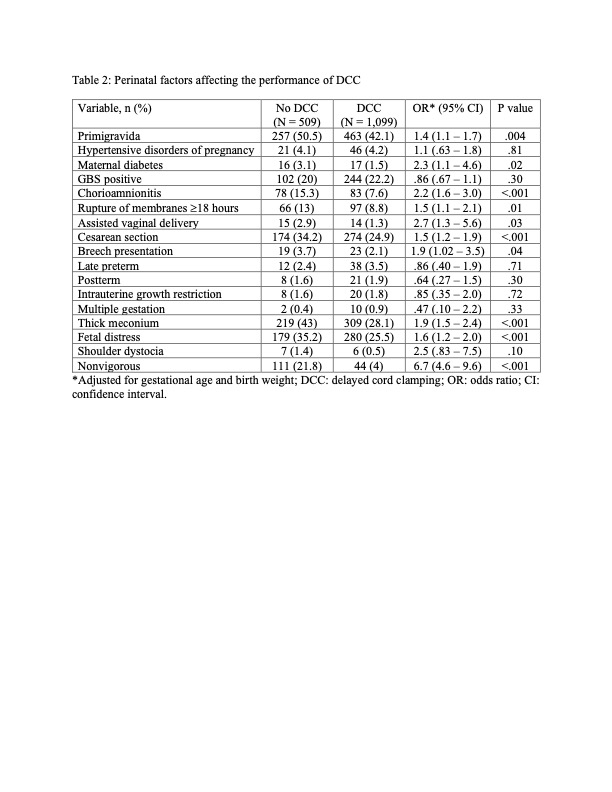Neonatal-Perinatal Health Care Delivery: Practices and Procedures
Neonatal-Perinatal Health Care Delivery 1: Practices: Antenatal Consultation, Substance Use, Potpourri
727 - Delayed Cord Clamping During Deliveries Associated with Meconium-Stained Amniotic Fluid
Publication Number: 727.244

Aali Furqan, BA (he/him/his)
Undergraduate
University of Texas at Dallas
Dallas, Texas, United States
Presenting Author(s)
Background:
Delayed cord clamping (DCC) after birth is beneficial for preterm and term infants. The need for immediate neonatal resuscitation is considered a contraindication for DCC. Meconium-stained amniotic fluid (MSAF) is contemplated to be a significant risk factor for newborn resuscitation. Therefore, if MSAF is considered as a contraindication, a significant proportion of late preterm and term newborns would be deprived of the benefits offered by DCC.
Our practice of DCC, previously limited to preterm infants (< 35 weeks’ gestational age), expanded to infants born ≥ 35 weeks' gestation since August 1st 2017. Deliveries associated with MSAF were included in this guideline.
Objective:
The purpose of this study was to evaluate this practice and report the perinatal factors affecting the non-performance of DCC in meconium-stained deliveries.
Design/Methods:
This single-center retrospective cohort study included infants ≥ 35 weeks' gestation born through MSAF between the time period of August 1, 2017 and July 31, 2019. Among the meconium-stained newborns who were eligible to receive DCC, the infants who did not undergo DCC (cord clamped and cut within 10 seconds after birth) were compared to infants on whom DCC was performed for at least 60 seconds after birth.
Results:
During the study period, out of 13, 489 infants of ≥ 35 weeks' gestation delivered, 1608 (12%) were born through MSAF and eligible to receive DCC. DCC was not executed on 509 (31.7%; No DCC group), but performed on 1099 (68.3%; DCC group). Infants in the DCC group had significantly higher Apgar scores and lower need for intervention (needing resuscitative efforts beyond initial steps) in the delivery room. Fewer infants in the DCC group were admitted to neonatal intensive care unit, including for respiratory causes. (Table 1)
By applying logistic regression after correcting for gestational age and birth weight, the perinatal factors that independently significantly affected the non-performance of DCC are detailed in Table 2. They were primigravida, maternal diabetes, chorioamnionitis, rupture of membranes ≥ 18 hours, assisted vaginal delivery, cesarean section, breech presentation, thick meconium, fetal distress and nonvigorous status of the newborn at birth.
Conclusion(s):
DCC was not executed in a third of deliveries associated with MSAF. Future quality improvement and research efforts should target the perinatal factors influencing the non-performance of DCC with a goal to optimize the placental transfusion.
.jpg)

